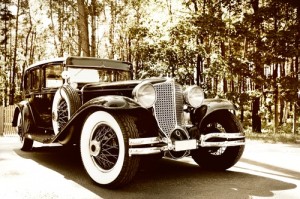 Have you ever driven a car, truck or bus from the early ‘60s (when fuel cards were first introduced in the US) or older? It’s amazing how drastically different the experience is from motoring today. Modern cars have seats that massage you as you drive along, fuel cards that allow you to fill up without cash, airbags that embrace you in the event of an accident and electronic systems that prod you awake if they detect that you’re drifting off. ‘Vintage’ cars on the other hand, are made from unyielding steel and wood, run on leaded fuels and feel industrial and mechanical to drive. Times have certainly changed; here are just a few ways in which driving today is easier than it ever was before…
Have you ever driven a car, truck or bus from the early ‘60s (when fuel cards were first introduced in the US) or older? It’s amazing how drastically different the experience is from motoring today. Modern cars have seats that massage you as you drive along, fuel cards that allow you to fill up without cash, airbags that embrace you in the event of an accident and electronic systems that prod you awake if they detect that you’re drifting off. ‘Vintage’ cars on the other hand, are made from unyielding steel and wood, run on leaded fuels and feel industrial and mechanical to drive. Times have certainly changed; here are just a few ways in which driving today is easier than it ever was before…
Driver assistance
If you drive a modern car, its brain will be more sophisticated than the lunar lander that guided Neil Armstrong and Buzz Aldrin to the surface of the moon some 43 years ago. Power steering, active YAW control and anti-lock breaking systems are the least of our modern-day digital co-pilots; the latest machines use cameras and sensors to park themselves, adjust course automatically if you look like you’re unintentionally merging with a neighbouring lane and can sense when their drivers are getting tired. Modern cars nanny and mollycoddle us in ways that would have seemed incomprehensible to the public of a mere half-century before, and we’ve come so far in the last few years that even the science-fiction of 20 years ago can’t compete with the reality of the present day.
Filling up
The first commercially-available fuel pumps were only really introduced around the 1930s, so the concept of filling up is still a relatively new one. For years, fuel pumps were manned and operated by attendants who would pump customer’s fuel for them. With lower levels of traffic on Britain’s roads back then, buying fuel was a leisurely affair and people could pay for their petrol and diesel with a handful of coins, an unthinkable practice today. Nowadays, most fuel stations are self-service affairs, where busy motorists can quickly fill up their vehicles, pay at the pump and be on their way again. Fuel cards make this process even more speedy and convenient, with services like our Esso cards and European diesel fuel cards allowing drivers to buy cost-effective fuel from hundreds of outlets across the UK and Europe alike.
Comfort
Early vehicles were hardly the climate-controlled, adjustable chambers of leather and largesse that we’re used to today. My first car was an ancient 1960 Austin A40, and let me assure you that any allusions to comfort were few and far between. The seats were sticky leather and only came to halfway up my back; you could slide them back (a bit – certainly not enough for a six-footer) but there were no headrests and you couldn’t adjust the angle of the chair backs at all. Of course, there was no such thing as air-con when the A40 was built, so summer days were hot – unless you wanted to pull down the sash windows, of course. Winter was worse though, as the only heater was one which channelled in oily heat from the car’s engine. Not ideal.
Fortunately, things are very different today, so don’t hesitate to take advantage of all the improvements that progress has afforded us. Our fuel cards are a cost-effective, convenient solution to cash and cards at the fuel pumps, so jump on the bandwagon and join the wave of the future.